Hey there, friend! If you’re reading this, chances are you or someone you care about is navigating the world of diabetes. And let me tell you, it can be a wild ride. One of the key things that can make a huge difference in this journey? Carb counting. I know, I know – it might sound a bit intimidating at first, but trust me, it’s a total game-changer for managing those pesky blood sugar levels. This guide is here to break it down for you in a way that’s easy to understand and even, dare I say, a little bit fun. So, let’s dive in and demystify this whole carb-counting thing together!
Why Even Bother with Carbs?
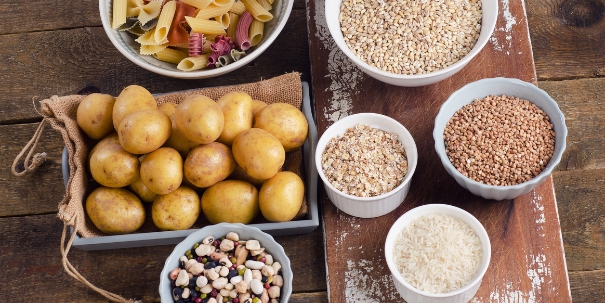
Alright, let’s start with the basics. What’s the big deal with carbohydrates anyway? Well, carbs are basically your body’s main source of energy. When you eat them, your body breaks them down into glucose (sugar), which then enters your bloodstream. This glucose is like fuel for your cells, powering everything from your morning jog to your late-night brainstorming sessions.
But here’s the catch: not all carbs are created equal.
The Carb Family Tree: Simple vs. Complex
Think of carbs like a big family with different personalities:
- Simple Carbs (The Quick-Burners): These are your sugars – the kind found naturally in fruits and milk, but also the ones added to things like candy and soda. They give you a quick burst of energy, but it doesn’t last long.
- Complex Carbs (The Slow and Steady Crew): These are your starches and fibers, found in whole grains, veggies, and beans. They take longer to break down, providing a more sustained release of energy. Think of them as the marathon runners of the carb world.
It’s important to remember that not all carbs are “bad.” Fruits and legumes, for instance, contain natural sugars but are packed with vitamins, minerals, and fiber that are beneficial for overall health.
For folks with diabetes, understanding this difference is crucial. Simple carbs can cause a rapid spike in blood sugar, while complex carbs are more likely to keep things on an even keel. It’s all about finding that sweet spot (pun intended!) for your body.
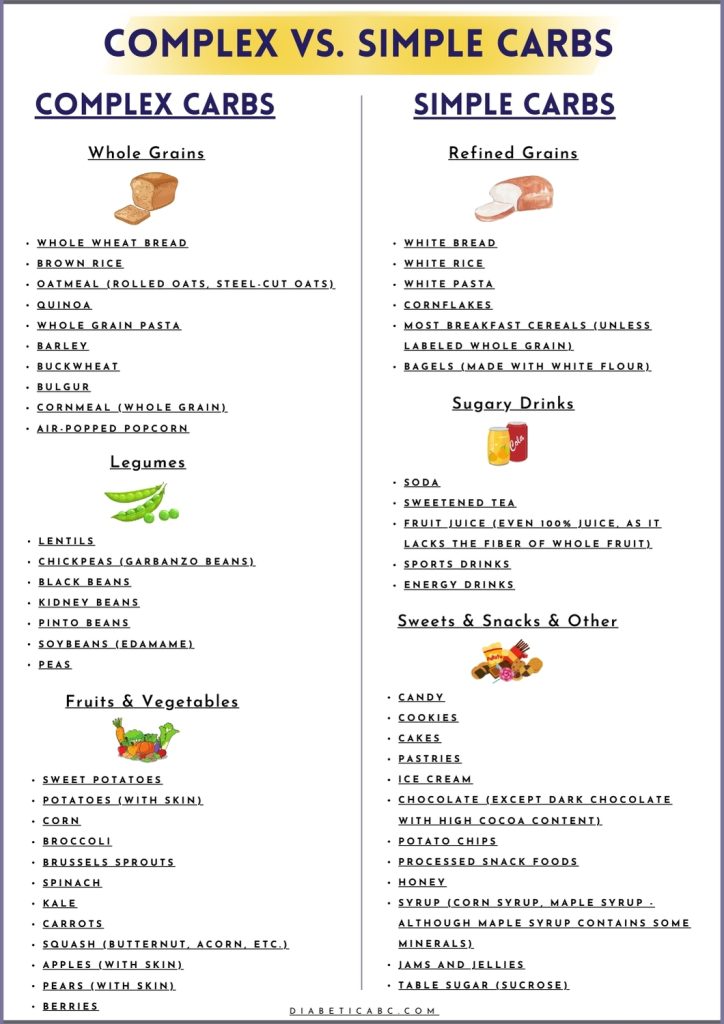
Carb Counting: Your Secret Weapon for Diabetes Management
So, why should you, as someone dealing with diabetes, care about counting carbs? Simply put, it’s one of the most effective ways to keep your blood sugar levels in check. Think of it as becoming a detective, tracking down those carbs and understanding their impact on your body.
The Blood Sugar Connection: A Direct Link
Here’s the deal: when you eat carbs, your blood sugar goes up. That’s a fact. But how much it goes up depends on the type and amount of carbs you consume. By learning to count carbs, you’re essentially gaining control over these fluctuations. It’s like learning the language of your body and responding accordingly. For instance, if you take insulin, knowing the exact carb count helps in determining the right insulin dose. It’s like matching a key to a lock – precise and effective!
Getting Started: Your Carb Counting Toolkit
Okay, now that you’re pumped about the “why,” let’s talk about the “how.” The first step? Figuring out your personal carb goals.
1. Determine Your Daily Calorie Needs: Laying the Foundation
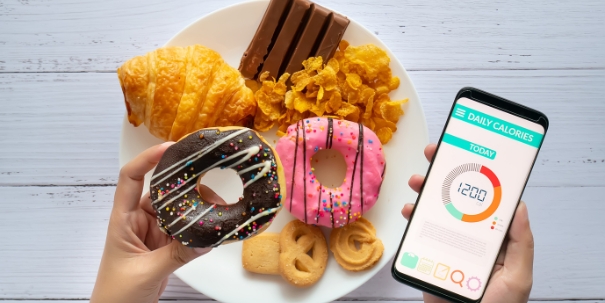
Before you can calculate your carb needs, you need to estimate your daily calorie needs. This is the total number of calories your body needs to maintain your current weight. Several factors influence this, including:
- Age: Calorie needs generally decrease with age.
- Sex: Men typically have higher calorie needs than women.
- Height and Weight: Larger individuals generally require more calories.
- Activity Level: The more active you are, the more calories you burn.
A Starting Point: The Mifflin-St Jeor Equation
The Mifflin-St Jeor equation is a commonly used formula to estimate Basal Metabolic Rate (BMR), which is the number of calories your body burns at rest. Here’s how it works:
- For Men: BMR = (10 x weight in kg) + (6.25 x height in cm) – (5 x age in years) + 5
- For Women: BMR = (10 x weight in kg) + (6.25 x height in cm) – (5 x age in years)1 – 161
Example:
Let’s say we have a 40-year-old woman who is 5’6″ (167.6 cm) tall and weighs 150 lbs (68 kg).
- Convert height to centimeters: 5’6″ = 66 inches; 66 inches x 2.54 cm/inch = 167.6 cm
- Convert weight to kilograms: 150 lbs / 2.2 lbs/kg = 68 kg
- Plug the values into the equation: BMR = (10 x 68) + (6.25 x 167.6) – (5 x 40) – 161 BMR = 680 + 1047.5 – 200 – 161 BMR = 1366.5 calories
Adjusting for Activity Level:
Once you have your BMR, you need to multiply it by an activity factor to account for your daily physical activity:
- Sedentary (little to no exercise): BMR x 1.2
- Lightly Active (light exercise/sports 1-3 days/week): BMR x 1.375
- Moderately Active (moderate exercise/sports 3-5 days/week): BMR x 1.55
- Very Active (hard exercise/sports 6-7 days a week): BMR x 1.725
- Extra Active (very hard exercise/sports & physical job):2 BMR x 1.9
Example (continued):
Let’s say our 40-year-old woman is moderately active. We would multiply her BMR by 1.55:
1366.5 calories x 1.55 = 2118 calories
This is her estimated daily calorie needs to maintain her current weight.
2. Set Your Carb Goals: Finding Your Sweet Spot
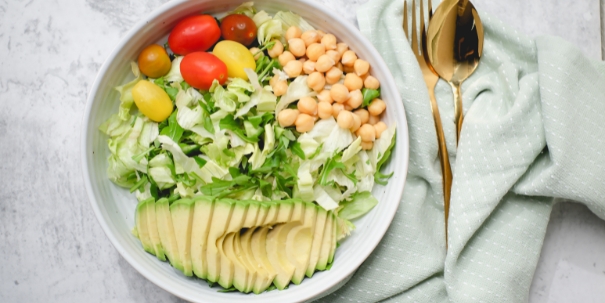
Your ideal carb intake depends on things like your activity level, your body size, any weight management goals you might have, and how your body responds to carbohydrates. This isn’t a one-size-fits-all situation.
General Guidelines:
- The Dietary Guidelines for Americans recommends that carbohydrates make up 45-65% of total daily calories.
- People with diabetes might need to adjust this range, often starting with 45-55% of their calories coming from carbohydrates.
- Many doctors recommend getting around 130-135 grams of carbohydrates per day as a minimum, but this amount should be modified as needed, depending on a variety of individual factors.
Calculating Carb Grams:
- Determine the percentage of calories from carbs: Let’s say our example woman aims for 45% of her calories from carbs.
- Multiply your total daily calorie needs by the chosen percentage: 2118 calories x 0.45 = 953 calories from carbs
- Divide the calories from carbs by 4 (since each gram of carbohydrate provides 4 calories): 953 calories / 4 calories/gram = 238 grams of carbs
This means our example woman could aim for roughly 238 grams of carbohydrates per day.
IMPORTANT DISCLAIMER:
These calculations are estimations and should not replace personalized advice from your doctor or a registered dietitian (RD) or a certified diabetes educator (CDE). They can help you determine your ideal carb intake based on your individual needs, medical history, and blood glucose response. Factors like medication, insulin use, and specific health conditions can significantly impact your carb needs.
3. Tools of the Trade: Gearing Up for Success

- Measuring Cups and Scales: These are your best friends for accurate portioning, at least when you’re starting out. Over time, it’s good to be able to portion things out correctly without the help of these tools, but initially, they are a lifesaver.
- Visual Cues: Learn to estimate portion sizes using visual cues. For example, a cup of cooked pasta is about the size of your fist, and 3 ounces of meat is roughly the size of a deck of cards.
- Tracking Tools: There are tons of apps and websites out there that can help you track your carb intake. MyFitnessPal, Carb Manager, and Lose It! are popular choices, and many allow you to scan barcodes for quick nutritional info. You can also go old-school with a food diary or a carb-counting book.
4. Portion Control: It’s Not Just About What You Eat, But How Much

You could be eating the healthiest carbs in the world, but if you’re eating too much of them, it can still throw your blood sugar out of whack. Learning to eyeball portion sizes accurately is a skill that comes with practice.
Dining Out and Social Events: When you’re at a buffet or a party, it’s easy to overindulge. Try to fill half your plate with non-starchy vegetables, a quarter with lean protein, and a quarter with carbs. If you’re unsure about the carb content of a dish, it’s always better to overestimate slightly than to underestimate.
One common mistake? Underestimating portions. We’ve all been there – thinking that handful of chips is just a small snack when it’s really a carb bomb in disguise!
5. Don’t Forget the Supporting Cast: Protein and Fat
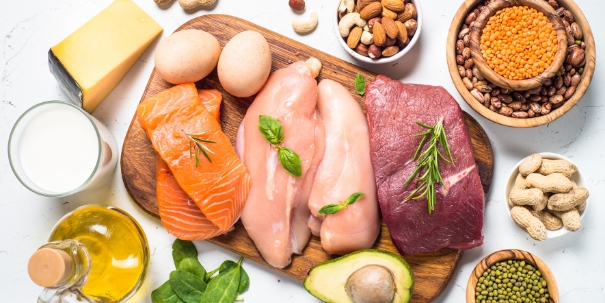
While carbs are the star of the show, don’t forget about protein and fat. They play important supporting roles in a balanced diet. A balanced meal helps slow down the absorption of carbs, preventing those blood sugar roller coasters.
Decoding the Nutrition Label: Your New Best Friend
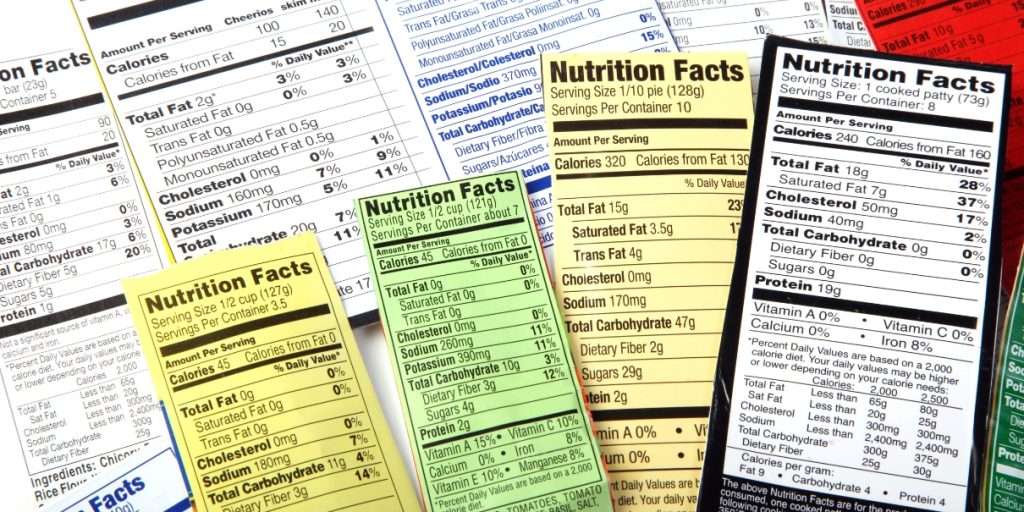
Okay, this is where the rubber meets the road. Learning to read nutrition labels is essential for accurate carb counting.
The “Total Carbohydrate” Mystery: Your Main Focus
This is the number you really want to pay attention to. It tells you the total amount of carbs in a serving of that food.
Sugars: The Good, the Bad, and the Added
The label will also break down the sugars, showing you how much is naturally occurring (like in fruit) and how much is added (like in processed foods). Added sugars are the ones you want to limit as much as possible.
Fiber: Your Secret Weapon
Fiber is a type of carb, but it’s kind of a superhero. It doesn’t raise your blood sugar the way other carbs do, and it can actually help slow down the absorption of sugar.
Diving Deeper: Net Carbs
Some people subtract the fiber from the total carbs to get the “net carbs.” To calculate net carbs, you take the total carbs and subtract the grams of fiber. For some people, especially those following a low-carb diet, focusing on net carbs can be helpful. However, it’s not a universally accepted practice, so it’s best to discuss this with your healthcare provider.
Serving Size: The Sneaky Culprit
Always, always, always check the serving size. The carb count is based on that specific amount. If you eat double the serving size, you’re getting double the carbs.
A Quick Note on Sugar Alcohols
You might see these listed on some labels, especially in “sugar-free” products. They’re a type of sweetener that has less of an impact on blood sugar than regular sugar, but they can still affect it, especially in large amounts. It is also important to remember that sugar alcohols can cause stomach discomfort in some individuals.
“Sugar-free” does not necessarily mean “carb-free.” Always check the “Total Carbohydrate” on the label to be sure.
Going Beyond the Basics: Advanced Carb Counting
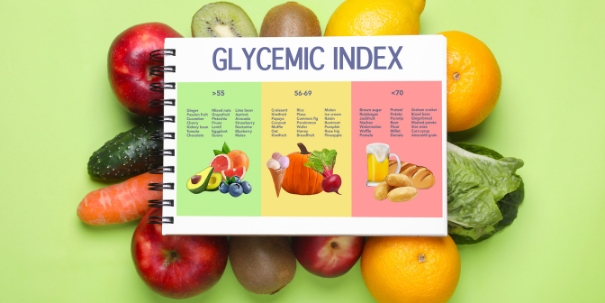
Once you’ve mastered the fundamentals of carb counting, you might want to explore some more advanced concepts that can provide a finer level of control over your blood glucose management.
Glycemic Index (GI) and Glycemic Load (GL): Understanding the Speed of Carbs
The Glycemic Index (GI) is a ranking system that measures how quickly a carbohydrate-containing food raises your blood sugar levels after eating it, compared to a reference food (usually pure glucose or white bread). Foods are typically categorized as:
- Low GI: 55 or less
- Medium GI: 56-69
- High GI: 70 or more
Foods with a high GI are quickly digested and absorbed, causing a rapid spike in blood sugar. Low GI foods, on the other hand, are digested and absorbed more slowly, resulting in a gradual rise in blood sugar and insulin levels.
The Glycemic Load (GL) takes into account both the GI of a food and the amount of carbohydrates in a typical serving. It provides a more accurate picture of a food’s real-life impact on your blood sugar. GL is calculated by multiplying the GI of a food by the grams of carbohydrates in the serving, then dividing by 100. GL values are generally categorized as:
- Low GL: 10 or less
- Medium GL: 11-19
- High GL: 20 or more
Why Consider GI and GL?
For some individuals with diabetes, particularly those who experience unpredictable blood sugar fluctuations, paying attention to GI and GL can be helpful. Choosing low to medium GI/GL foods may result in:
- More stable blood sugar levels
- Improved blood glucose control after meals
- Increased satiety (feeling full)
- Better weight management
When to Use GI and GL:
While the GI and GL can be useful tools, they are not essential for everyone with diabetes. It’s generally more important to focus on your total carbohydrate intake and overall dietary pattern. However, your doctor or dietitian may suggest incorporating GI and GL considerations into your meal planning if:
- You have difficulty controlling your blood sugar after meals
- You are aiming for very tight blood glucose control
- You are experiencing frequent hypoglycemia (low blood sugar)
Common Foods and Their GI/GL Values:
Here’s a small table showing the GI and GL values for some common foods. Keep in mind that these are approximate values and can vary depending on factors like ripeness,
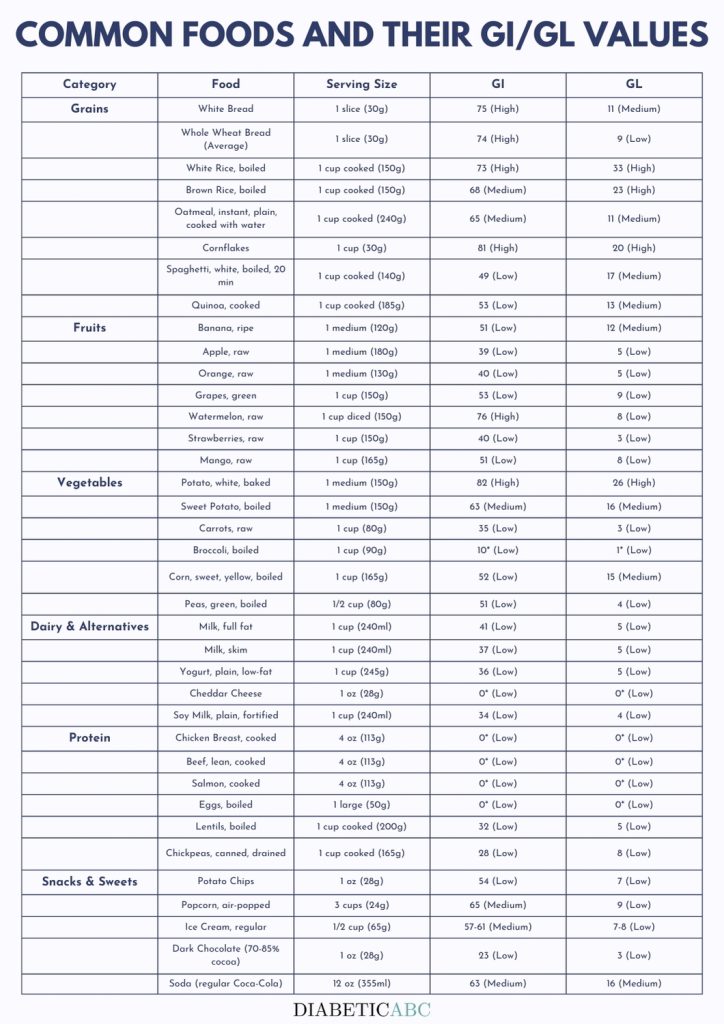
Carb Counting in the Real World: Practical Tips

Knowing the theory is great, but how do you actually apply this stuff in your everyday life?
Meal Planning: Your Secret to Success
Planning your meals and snacks in advance can make a huge difference. Try to distribute your carbs evenly throughout the day to avoid big spikes and crashes in your blood sugar.
Eating Out? No Problem!
It can be tricky to count carbs when you’re eating out, but it’s not impossible. Many restaurants now provide nutritional information online. If not, you can use your newfound estimation skills. Don’t be afraid to ask your server about ingredients or portion sizes, either!
Mindful Eating: Savor the Flavor
Instead of scarfing down your meals, try to eat slowly and mindfully. Pay attention to the taste, texture, and smell of your food. This can help you feel more satisfied and prevent overeating.
Where Do I Find All These Carbs?
Knowing where carbs hide is half the battle. Here are a few common sources of carbohydrates:
- Grains & Starchy Vegetables: Bread, pasta, rice, potatoes, corn, these are all carb-heavy. A slice of bread might have around 15 grams, while a cup of cooked rice can have 45 grams.
- Fruits: Yes, fruits have natural sugars, but they also have fiber and vitamins. A small apple might have 15 grams of carbs, while a banana could have closer to 30.
- Dairy: Milk and yogurt contain lactose, a type of sugar. A cup of milk has about 12 grams of carbs.
- Sugary Foods & Drinks: This one’s obvious, but it’s worth repeating. Soda, candy, desserts – these are loaded with added sugars. A can of soda can easily have 40 grams of carbs or more.
- Legumes & Beans: These are great sources of protein and fiber, but they also contain carbs. A cup of cooked lentils has about 40 grams of carbs.
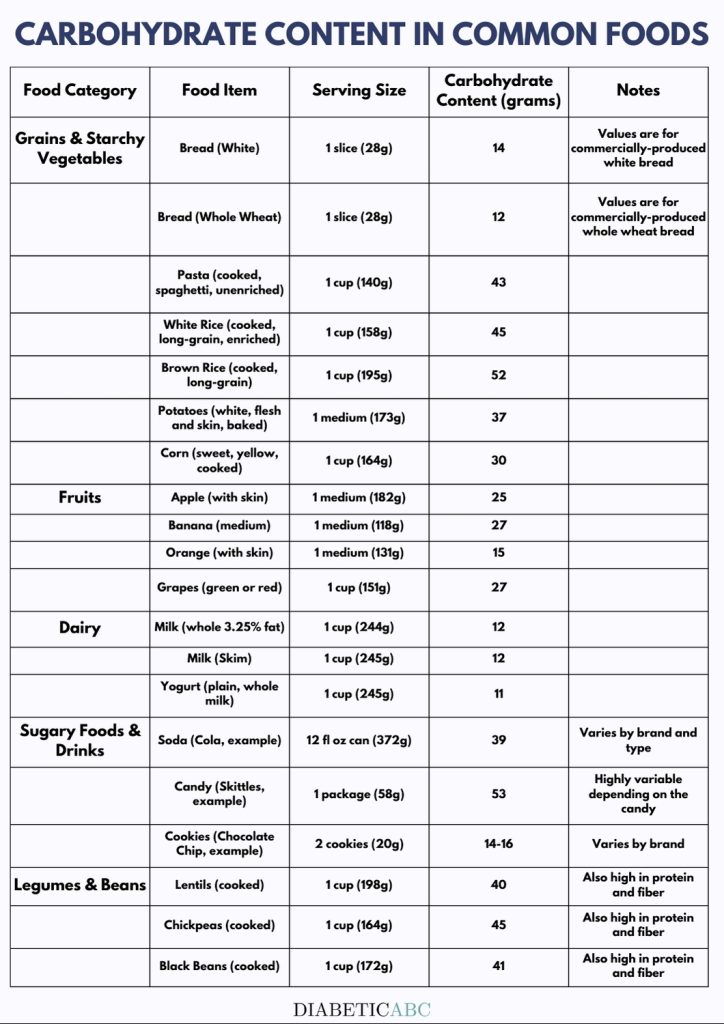
Sample Meal Plans: Putting it All Together
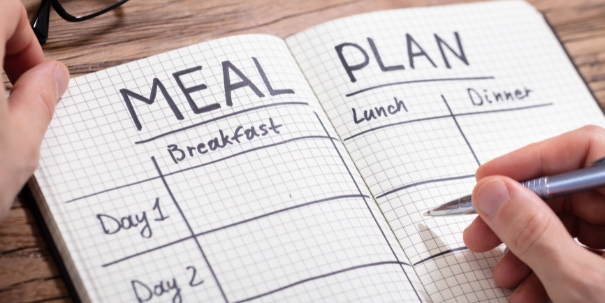
Here are a couple of examples to give you an idea of what a day of balanced meals might look like:
Example 1: Moderate-Carb Meal Plan (Around 150-165 grams of carbs)
- Breakfast (45g carbs): 1 cup oatmeal (30g) made with water, 1/2 cup berries (7g), and a handful of almonds (8g).
- Lunch (60g carbs): Salad with 4oz grilled chicken (0g), 1/2 cup chickpeas (20g), 1 cup mixed greens (5g), 1 small whole-wheat roll (30g), and 2 tablespoons of light vinaigrette (5g).
- Snack (15g carbs): A small apple (15g) with 2 tablespoons of peanut butter (0g).
- Dinner (45g carbs): 4oz baked salmon (0g), 1/2 cup cooked brown rice (22g), 1 cup steamed broccoli (10g), and a side salad with 2 tablespoons of light dressing (5g).
- Dessert/Snack (18g carbs): 3 cups of air-popped popcorn (18g)
Example 2: Lower-Carb Meal Plan (Around 90-100 grams of carbs)
- Breakfast (20g carbs): 2-egg omelet (2g) with 1/4 cup chopped veggies (3g) and 1 oz cheddar cheese (1g) , 1/2 cup of strawberries (6g) and 1/4 cup of almonds (8g).
- Lunch (30g carbs): Large salad with 4oz grilled chicken (0g), 2 cups mixed greens (10g), 1/2 cup chopped cucumber and tomatoes (5g), 1/4 avocado (4g), and 2 tablespoons of olive oil and vinegar dressing (2g). 1 small pear (9g).
- Snack (10g carbs): 1/4 cup of almonds (8g) and a string cheese (2g).
- Dinner (40g carbs): 4oz baked chicken breast (0g), 1 cup roasted Brussels sprouts (10g), 1/2 cup mashed sweet potatoes with a teaspoon of butter (25g).
- Snack (5g carbs): 1/2 cup of cottage cheese (5g).
Remember: These are just examples. Your individual carb needs may vary. Work with your healthcare provider or a dietitian to create a plan that’s right for you.
Snack Attack: Healthy and Lower-Carb Options
- Veggies and Hummus: 1 cup of baby carrots or cucumber slices (about 10g carbs) with 1/4 cup of hummus (about 8g carbs).
- Hard-boiled Eggs: One or two hard-boiled eggs (about 1g carb each).
- Nuts and Seeds: A small handful of almonds, walnuts, or pumpkin seeds (about 5-8g carbs per 1/4 cup).
- Cheese: A stick of string cheese or a few cubes of cheddar (about 1-2g carbs).
- Greek Yogurt: 1/2 cup of plain, full-fat Greek yogurt (about 6g carbs) with a sprinkle of cinnamon.
Avoiding Common Carb-Counting Pitfalls

Even with the best intentions, it’s easy to make mistakes. Here are a few common ones to watch out for:
- Hidden Sugars: They’re lurking everywhere! Check labels carefully, even on things you might not expect, like flavored yogurts, smoothies, certain marinades, and even some “health” bars. Ketchup, barbecue sauce, and salad dressings can also be surprisingly high in sugar.
- Forgetting About Fiber: Remember, fiber is your friend! Don’t forget to factor it in, especially if you’re calculating net carbs.
- Inconsistent Tracking: If you’re only tracking your carbs some of the time, you’re not getting the full picture. Try to be consistent, even on days when you’re not eating perfectly.
- Emotional Eating: Stress, boredom, and other emotions can sometimes lead to mindless eating. If you find yourself reaching for food when you’re not truly hungry, try to find other ways to cope, like going for a walk, talking to a friend, or engaging in a hobby you enjoy. You might also find it helpful to explore resources on emotional eating or mindful eating.
- Over-Reliance on “Sugar-Free” Labels: As mentioned before, “sugar-free” doesn’t always mean “carb-free.” Always check the nutrition label for the total carbohydrate content.
Beyond Food: The Lifestyle Factor
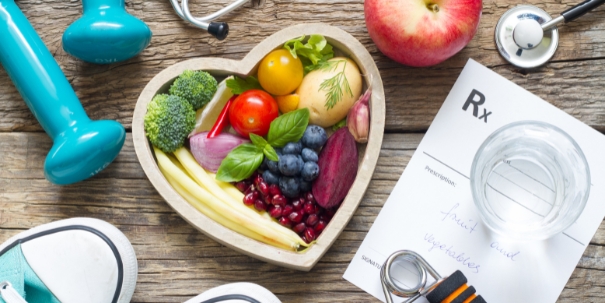
Carb counting is a big piece of the puzzle, but it’s not the only one. Other lifestyle factors can also affect your blood sugar levels.
Exercise and Activity
Physical activity can help your body use glucose more effectively, which can lower your blood sugar. It’s generally a good idea to check your blood sugar before, during, and after exercise, especially if you’re new to it or if you take insulin. You might find that you need to adjust your carb intake or insulin dose depending on your activity level.
Stress Management and Sleep
Stress and poor sleep can both cause your blood sugar to rise. Finding healthy ways to manage stress, like exercise, meditation, or spending time in nature, can be beneficial. Aim for 7-9 hours of quality sleep per night.
Frequently Asked Questions (FAQ)

Here are some common questions people have about carb counting:
Q: What do I do if I eat more carbs than I planned?
A: Don’t beat yourself up! It happens to everyone. The important thing is to get back on track with your next meal or snack. If you take insulin, you might need to adjust your dose based on your blood sugar level and your insulin-to-carb ratio. If you’re unsure what to do, contact your healthcare provider.
Q: How do I deal with cravings for sweets?
A: Cravings are normal, especially when you’re first adjusting to a new way of eating. Here are a few tips:
- Plan for them: Include small portions of your favorite treats in your meal plan, so you don’t feel deprived.
- Find healthy alternatives: Experiment with lower-carb versions of your favorite desserts or snacks.
- Distract yourself: When a craving hits, try engaging in another activity, like going for a walk, reading a book, or calling a friend.
- Stay hydrated: Sometimes thirst can be mistaken for hunger or cravings.
- Remember your “why”: Remind yourself why you’re making these changes and focus on the long-term benefits.
Q: Can I still eat out at restaurants?
A: Absolutely! With a little planning and some smart choices, you can still enjoy dining out. Here’s how:
- Look up the menu online in advance: Many restaurants now provide nutritional information on their websites.
- Ask for modifications: Don’t be afraid to ask for substitutions, like swapping fries for a side salad or asking for sauces on the side.
- Control your portions: Consider sharing an entree with a friend or taking half of it home for later.
- Be mindful of hidden carbs: Watch out for breading, sauces, and dressings, which can be surprisingly high in carbs.
Weekly Challenge: Put Your Knowledge into Action
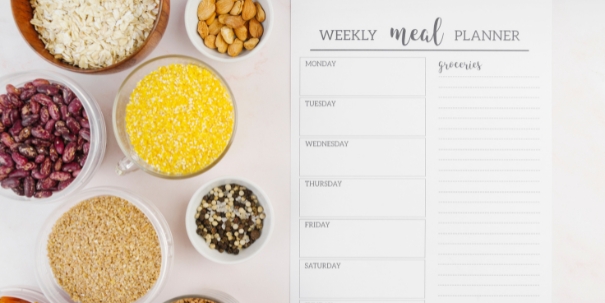
To help you get started, here’s a little challenge:
Week 1: Track your carb intake for three days. Use an app, a food diary, or whatever method works best for you. Don’t worry about changing what you eat just yet; simply focus on becoming aware of your current carb intake.
Week 2: Set a daily carb goal. Work with your healthcare provider or dietitian to determine a target that’s appropriate for you. Then, start planning your meals and snacks to stay within that goal.
Week 3: Experiment with new recipes. Find some lower-carb or diabetes-friendly recipes online or in cookbooks and try them out. This can be a fun way to add variety to your diet and discover new favorite foods.
Wrapping it All Up: Key Takeaways
So, there you have it – a comprehensive beginner’s guide to carb counting. Remember, the key takeaways are:
- Carb counting is a powerful tool for managing your blood sugar. By understanding how many carbs you’re consuming, you can make informed decisions about your food choices and insulin dosages (if applicable).
- Understanding the different types of carbs and their impact is essential. Simple carbs cause a quicker rise in blood sugar, while complex carbs provide a more sustained release of energy.
- Accurate portioning and consistent tracking are crucial. Use measuring cups, scales, and tracking tools to stay on top of your carb intake.
- Don’t be afraid to ask for help and lean on your support system. Your healthcare team, family, friends, and other people with diabetes can provide valuable guidance and encouragement.
- It’s a journey, not a race. Be patient with yourself, celebrate your progress, and keep learning and adapting along the way.
You’re not alone on this journey. Take it one step at a time, be patient with yourself, and celebrate your progress along the way. With dedication and the right tools, you can master carb counting and take control of your diabetes management. You’ve got this!
Find this carb-counting guide helpful? Share it on Pinterest to help others master their diabetes management too! 📌

References
- Effect of a low-carbohydrate diet on appetite, blood glucose levels, and insulin resistance in obese patients with type 2 diabetes.
- Comparison of weight-loss diets with different compositions of fat, protein, and carbohydrates.
- Effects of a low-carbohydrate diet on glycemic control in type 2 diabetes: a systematic review and meta-analysis of randomized controlled trials.
- Impact of carbohydrate counting on glycemic control in children with type 1 diabetes: a systematic review and meta-analysis.
- Use of the glycemic index in predicting the glycemic response to mixed meals.
- International tables of glycemic index and glycemic load values: 2008.
- Effect of intensive blood-glucose control with metformin on complications in overweight patients with type 2 diabetes (UKPDS 34). UK Prospective Diabetes Study (UKPDS) Group.
- The effect of intensive treatment of diabetes on the development and progression of long-term complications in insulin-dependent diabetes mellitus. The Diabetes Control and Complications Trial Research Group.
- Efficacy of carbohydrate counting in type 1 diabetes: a systematic review and meta-analysis.
- Association Between Dietary Carbohydrate Intake and Glycated Hemoglobin: A Systematic Review and Meta-analysis of Prospective Cohort Studies.



